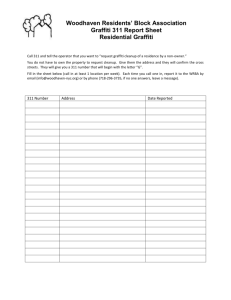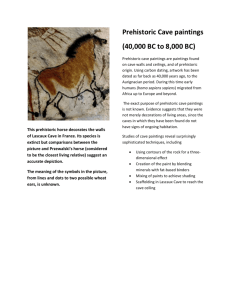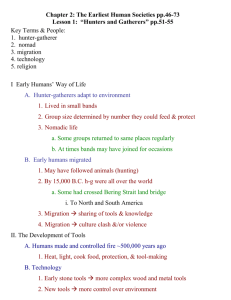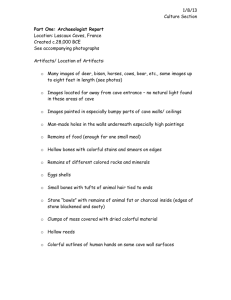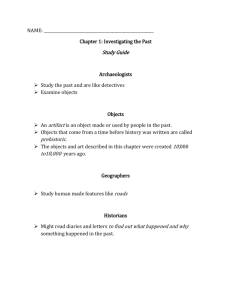Cave Paintings vs Graffiti Art
advertisement
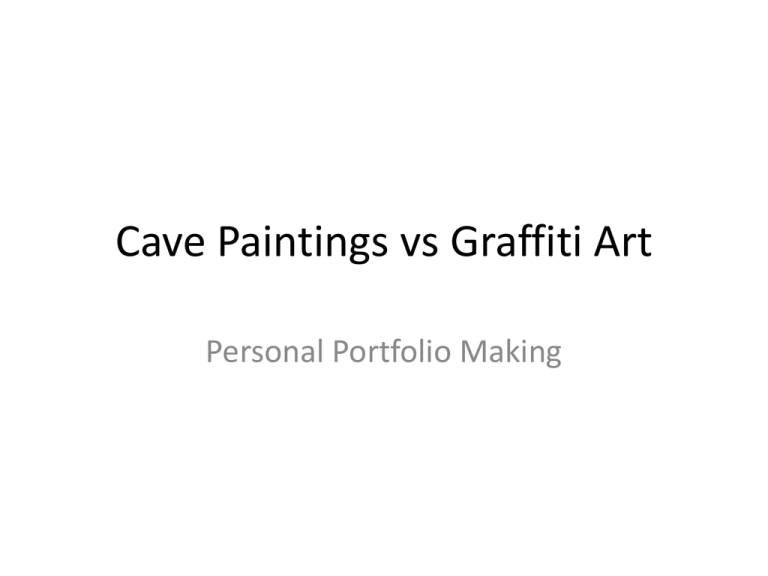
Cave Paintings vs Graffiti Art Personal Portfolio Making Lascaux Caves • Complex caves in southwestern France, famous for its Paleolithic cave paintings. 40,000 to 10,000 BC Cave Art Subjects Cave art portrays human hands; large numbers of animals in different activities, including various species, such as the woolly rhinoceros, which are now extinct, and a few which were extinct even at the time they were painted; geometric figures and signs. Cave Art Materials • Finger drawings done with soft clay • Engraving by means of stone picks, flint, rocks • Painting- with pigments from soil, rocks, plant matter that was burned, mineral fragments • Water and animal oils were binders (like how tempera paint uses egg to bind pigment, or acrylic uses plastic) • Stencils were used, paints were blown through pipes made from bird bones to apply paint. • http://www.artchive.com/artchive/C/cave.html Graffiti Art History Late 1960s Graffiti was used primarily by political activists to make statements and street gangs to mark territory. 1970s NYC: Street tags from writers such as TAKI183 were being recognized. Streets and Subways were being covered. Goal was to have as many tags up as possible. Tags started getting larger, designs started getting added in, and before long the “masterpiece” was being produced. (color and scale combined for drama) In the 1980s graffiti legislation made it harder for artists to work in the streets. Now modern graffiti artists aren’t using their skills for strictly vandalism purposes, but instead transform public spaces into beautiful, culture-rich street art, that help define the time and place in which we live with powerful images. http://www.mcny.org/content/citycanvas#view-gallery http://www.mymodernmet.com/profiles/blogs /10-street-artists-you-should Your Portfolio Cover: • How are cave paintings and graffiti similar? How are they different? • How are social media, cave paintings and graffiti connected to each other? • How can you use your portfolio as a way to express the time and place in which you live and what’s important to you?


